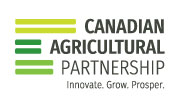Iron filters and water softeners can cause problems
Water discharged from iron filters and water softeners occupies a unique place in the field of household wastewater management. Unlike most other forms of wastewater, this discharge does not present a direct water contamination or quality threat.
The main difficulty it presents is volume. Water softeners and iron filters deliver large quantities of water to a septic system. If the design of the system did not account for these additional loads at the time of installation, this can cause the disposal component of the system to fail. It can also increase a septic tank’s potential to back up.
This creates major problems. First, the effluent received in the disposal component (field, mound, etc.) may not be effectively treated and may contaminate the groundwater. Secondly, the sewage that backs up with the wastewater can present a contamination risk. Third, the iron and salts removed from the water supply can have a negative effect on the capability of the soil to absorb the water.
Solutions
For these reasons, it’s not recommended that the farm’s septic system be used to handle brine from water softeners and iron filters. Instead, dispose of it on an area of the property where contamination will not be an issue and the iron in the brine can leach out through the soil profile.
There are a few ways to do this. Because iron is not considered contamination in any way that can create a health concern, it can be spread over the land. However, the best practice is to put it in a separate seepage pit. In some cases, small, rock-filled pits have successfully been used to receive this discharge. Care must be taken to ensure that these receiving pits are not placed in areas where there are high water tables.
Assistance available
Information and assistance on wastewater management, as well as a number of other on-farm environmental practices, is available through a strong network of EFP Technicians throughout the province.
This article may be reprinted with the credit: Alberta Environmental Farm Plan
For more how-to fact sheets or other information, visit www.albertaEFP.com.
 Initiative
Initiative



